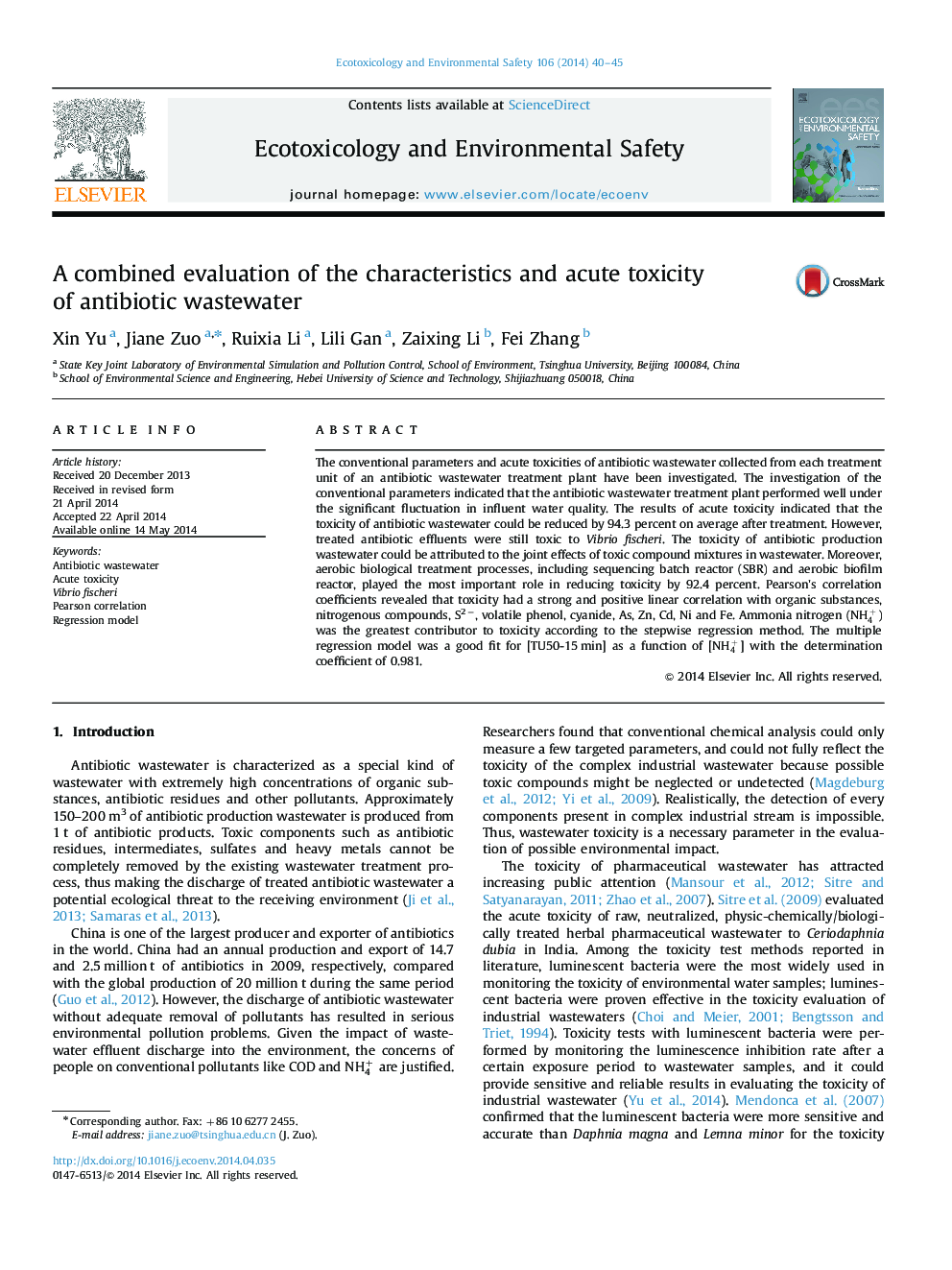| Article ID | Journal | Published Year | Pages | File Type |
|---|---|---|---|---|
| 4420017 | Ecotoxicology and Environmental Safety | 2014 | 6 Pages |
•COD and antibiotic concentrations were very high in antibiotic wastewater.•Raw and treated antibiotic wastewater were very toxic to Vibrio fischeri.•Toxicity can be predicted by [NH4+] and [NH4+]2 with a coefficient of 0.981.•Aerobic treatment processes contribute significantly to reduce toxicity.
The conventional parameters and acute toxicities of antibiotic wastewater collected from each treatment unit of an antibiotic wastewater treatment plant have been investigated. The investigation of the conventional parameters indicated that the antibiotic wastewater treatment plant performed well under the significant fluctuation in influent water quality. The results of acute toxicity indicated that the toxicity of antibiotic wastewater could be reduced by 94.3 percent on average after treatment. However, treated antibiotic effluents were still toxic to Vibrio fischeri. The toxicity of antibiotic production wastewater could be attributed to the joint effects of toxic compound mixtures in wastewater. Moreover, aerobic biological treatment processes, including sequencing batch reactor (SBR) and aerobic biofilm reactor, played the most important role in reducing toxicity by 92.4 percent. Pearson׳s correlation coefficients revealed that toxicity had a strong and positive linear correlation with organic substances, nitrogenous compounds, S2−, volatile phenol, cyanide, As, Zn, Cd, Ni and Fe. Ammonia nitrogen (NH4+) was the greatest contributor to toxicity according to the stepwise regression method. The multiple regression model was a good fit for [TU50-15 min] as a function of [NH4+] with the determination coefficient of 0.981.
